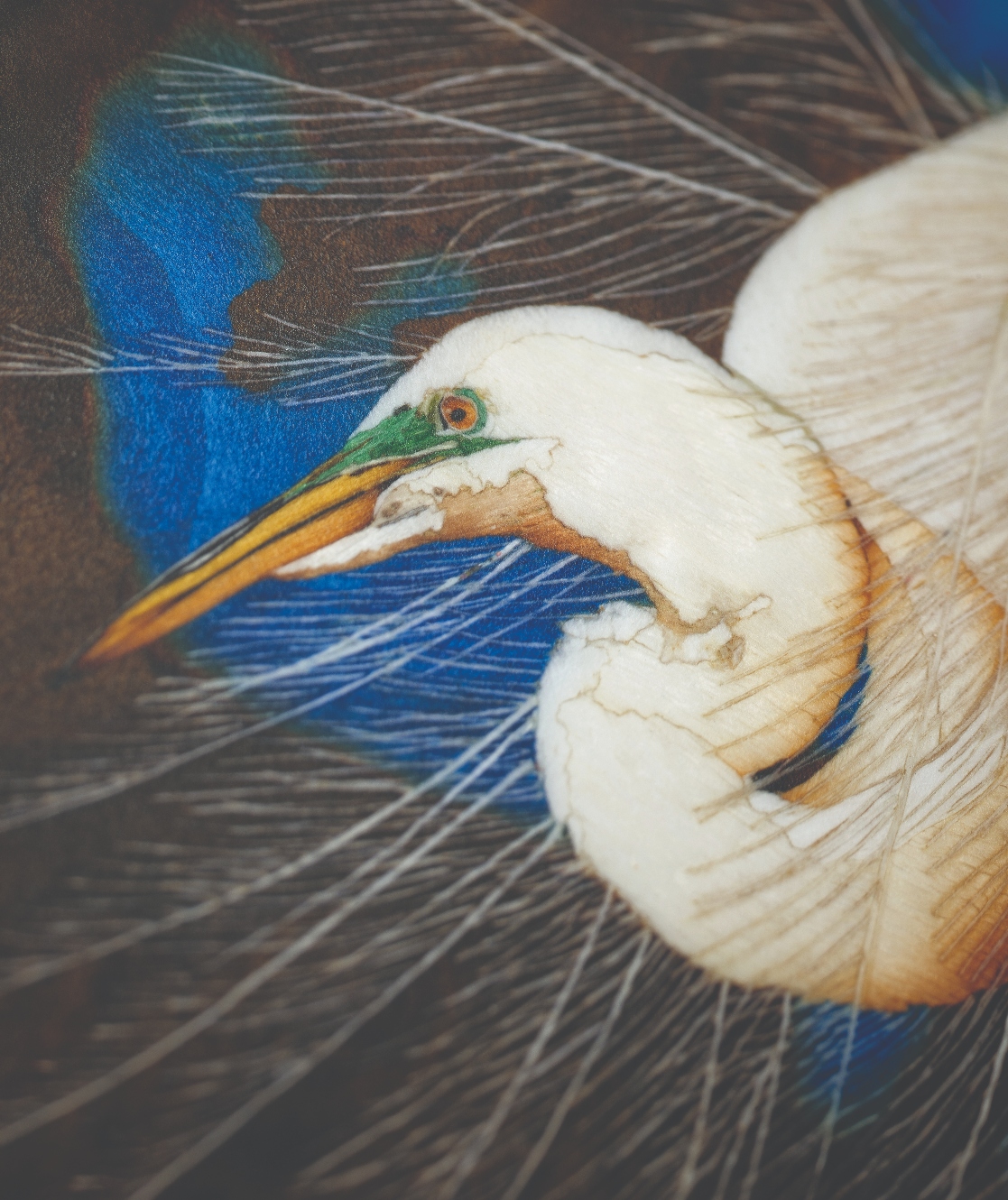Horology’s Cultural Compass: Watches as Timekeepers of Civilisation

The evolution of timekeepers is often viewed through the lens of technical ingenuity, yet something equally significant lies beneath their function: their profound connection to humanity’s journey of development and creativity. From the invention of the minute repeater to highlight the hours in an age before electricity to the perpetual calendar’s elegant solution for leap years, horological complications arose as responses to necessity. Each one, a mirror of its era, reflects the challenges and aspirations of its time.
But watches are also adept storytellers, chronicling our collective journey through culture, visual art, and architecture. As canvases for creativity, they immortalise humanity’s greatest achievements—whether capturing the splendour of Venetian landmarks, the emotional resonance of Van Gogh’s brushstrokes, or the daring asymmetry of Baroque design. They transcend mere utility, becoming cultural artefacts that celebrate the richness of our shared heritage.
Exploring the intersection of watchmaking and art, architecture, and cultural heritage reveals a truth: these timepieces are not just functional objects or status symbols. They are vessels for narrative, weaving a connection between the wearer and a broader tapestry of human ingenuity. They preserve artistic techniques, architectural triumphs, and cultural milestones in tangible and timeless forms, ensuring that the past continues to inspire the present.
At their core, these timepieces are celebrations of human ingenuity. They reflect our ability to create beauty, tell stories, and leave behind legacies that transcend time. They matter not only as watches but as living testaments to the enduring power of creativity and the artistry of human achievement. Through these cultural journeys, horology becomes much more than the measure of hours—it becomes the measure of our humanity.

UPHOLDING TRADITIONS
In a world increasingly shaped by technology and mass production, Patek Philippe’s Rare Handcrafts series offers a steadfast tribute to tradition. These timepieces are less about precision or luxury than they are cultural artefacts, capturing the essence of human creativity through techniques that have been passed down for generations. They reflect the journeys that connect us to our shared past, blending horological mastery with the rich tapestry of art and culture.
At the heart of the Rare Handcrafts series is Patek Philippe’s dedication to preserving métiers d’art, the traditional decorative crafts that elevate watchmaking into an art form. Cloisonné enamel, one of the most intricate techniques, uses fine wires to separate vibrant enamel colours, creating miniature masterpieces on the dial. The process requires intense precision, with every layer fired in a kiln to achieve the desired depth and luminescence.

Marquetry takes a different route, piecing together tiny slivers of wood into intricate mosaics, each design telling its own story. It’s a technique that requires both patience and an artistic eye, imbuing the dial with a texture and warmth that feels alive. Then there’s engraving—done entirely by hand—that transforms metal surfaces into canvases for cultural and historical narratives. These techniques aren’t just decorative; they are the mediums through which stories are told, preserving the essence of artistry from one generation to the next.
What makes the Rare Handcrafts series truly remarkable is its ability to take inspiration from a wide array of cultures and histories, turning each watch into a visual journey. A recent piece featuring an enamelled map of the Silk Road stands out as a prime example. It’s a celebration of centuries of cross-cultural exchange, with its delicate cartography paying homage to the trade routes that connected the East and West. Wearing it is akin to carrying a piece of history on your wrist, a reminder of the ingenuity and ambition that shaped the modern world.

Other timepieces draw from equally rich sources: pastoral Swiss landscapes captured in glowing enamel; Ottoman-inspired geometric designs; or the fluid curves of Arabic calligraphy. Each watch transcends its function as a timekeeper to become a narrative, an exploration of global heritage rendered in miniature. Patek Philippe’s commitment to the Rare Handcrafts series goes beyond creating beautiful objects; it’s about ensuring that traditional craftsmanship continues to thrive in the modern age. In the maison’s ateliers, artisans dedicate countless hours to perfecting techniques that are increasingly endangered in the fast-paced world of horology. But this isn’t preservation for its own sake; Patek Philippe innovates within these traditional crafts, finding ways to make them relevant for today’s collectors. The Rare Handcrafts series ensures that these age-old skills remain vibrant, valued, and appreciated.

To wear a Rare Handcrafts watch is to step into a larger story. It’s a connection to centuries of artistry and cultural exploration, distilled into a single object that lives on the wrist. These timekeepers aren’t just about where we are now; they’re about where we’ve been and the creative legacies we carry forward. In reminding the world that true luxury lies not in opulence but in the preservation of culture, the celebration of human ingenuity, and the stories that make us who we are, we are also reminded that they are the measure of our shared journey through history and artistry.
ART ON THE WRIST

Few maisons in haute horology have embraced the arts and culture as deeply as Vacheron Constantin. Since its founding in 1755, the brand has consistently aligned itself with the creative worlds of craftsmanship, design, and fine art, ensuring that each timepiece is not merely functional but a celebration of human ingenuity. This commitment has seen Vacheron Constantin champion métiers d’art — traditional decorative techniques such as enamelling, engraving, and guilloché — while collaborating with cultural institutions to preserve and reinterpret artistic heritage.
Over the centuries, Vacheron Constantin has produced watches that are both cultural artefacts and technical marvels. Its involvement with the decorative arts became a defining characteristic in the 19th century, as bespoke commissions for royalty and nobility frequently incorporated intricate miniatures, floral engravings, and guilloché patterns. This legacy continued into the 20th century, with landmark creations such as the 1977 Métiers d’Art collection, which celebrated decorative traditions in watchmaking. By the 21st century, Vacheron Constantin had cemented its position as a custodian of artistic excellence with its ongoing Métiers d’Art series, which regularly features intricate dials inspired by architecture, literature, and cultural iconography.

This storied history of engaging with culture and the creative arts finds its latest expression in the maison’s partnership with New York’s Museum of Modern Art (MoMA) through the A Masterpiece on Your Wrist programme. First unveiled in 2022, this initiative invites collectors to explore the intersection of fine art and horology, translating masterpieces from MoMA’s collection into miniature artworks on the dial. For 2024, the spotlight turns to two iconic painters: Vincent van Gogh and Winslow Homer.
Through the delicate techniques of miniature painting and cloisonné enamelling, Vacheron Constantin reimagines Van Gogh’s The Starry Night and Homer’s Breezing Up (A Fair Wind) in breathtaking detail. The swirling skies and vivid landscapes of Van Gogh’s work are captured with a precision that evokes his expressive brushstrokes. At the same time, Homer’s maritime scenes—redolent of movement and light—are rendered with an almost photographic clarity. These are not simple reproductions; each timepiece serves as a deeply considered tribute to the artist’s vision, distilled into a dial no larger than a few centimetres.

Such creations are only possible through Vacheron Constantin’s mastery of métiers d’art. Enamelling, in particular, demands extraordinary patience and technical expertise, requiring hours of meticulous work to layer colours and textures while maintaining the vibrancy of the original. The result is a collection that unites fine art with haute horology, blending the timeless appeal of both disciplines.
What makes the A Masterpiece on Your Wrist programme so compelling is its ability to transform iconic works of art into intimate, wearable forms. By immortalising these masterpieces on the wrist, Vacheron Constantin offers collectors a way to engage with cultural history on a profoundly personal level. It’s a celebration not just of fine watchmaking but of humanity’s capacity for creativity, ensuring that the beauty and stories of these works endure in a way that is both tangible and timeless.
POP CULTURE MEETS HOROLOGY

Few watch brands have navigated the intersection of heritage and modernity as deftly as Audemars Piguet. Under the leadership of its recently outgoing CEO François-Henry Bennahmias, the Royal Oak evolved from an icon of horology into a global cultural touchstone, one that mirrors the journey of contemporary luxury itself. The Royal Oak’s ability to traverse time and trends, while remaining true to its roots, exemplifies the idea of a cultural journey — blending tradition with an ever-evolving dialogue that captures the essence of its era.
Bennahmias’ tenure, which saw Audemars Piguet’s revenues soar, was marked by his deep understanding that relevance is as important as exclusivity. By forging partnerships with figures and entities that shaped the modern zeitgeist—from Australian fashion designer Tamara Ralph to Marvel Comics—he ensured that the Royal Oak was more than a timepiece; it became a symbol of the times. Each collaboration was a waypoint in the Royal Oak’s journey, connecting it to a broader narrative of art, culture, and modern identity.

The recent collaboration with contemporary artist Kaws is only the latest chapter in the Royal Oak’s ongoing exploration of cultural connections. Kaws’ Companion figure, synonymous with street art and global pop culture, brings an ephemeral, playful energy to the Royal Oak, transforming it into a wearable dialogue between high art and modern culture. The collaboration underscores the watch’s adaptability, turning its iconic design into a canvas for new artistic narratives.
This is far from the Royal Oak’s first foray into cultural partnerships. In 2005, a collaboration with Jay-Z marked a bold step into the world of music, creating a Royal Oak Offshore that married haute horology with the dynamic energy of hip-hop. The Marvel x Royal Oak Concept Tourbillon “Black Panther” watch similarly expanded the Royal Oak’s reach, introducing a new audience to the technical and artistic possibilities of watchmaking. Each partnership reflects a deliberate choice to connect with different cultural spheres, ensuring the Royal Oak remains a part of the collective journey through modern creativity.

At the heart of the Royal Oak’s enduring relevance is its ability to embrace change without losing sight of its origins. The octagonal bezel, exposed screws, and integrated bracelet—Gerald Genta’s revolutionary 1972 design—remain untouched, even as the Royal Oak explores new materials like ceramic and titanium, bold colours, and intricate skeletonisation. These evolutions reflect not just technical progress but also the willingness to journey into uncharted territories of design and collaboration.
The Kaws collaboration, for example, reimagines the Royal Oak as a statement of artistic exploration. It’s a watch that captures the essence of travel—not in the literal sense, but as a journey through ideas, cultural movements, and artistic expression. This duality—anchored in heritage yet open to reinvention—is what makes the Royal Oak a symbol of progress and tradition.
The Royal Oak’s ascent is, in many ways, a reflection of the broader shifts in how luxury is perceived. Where exclusivity was once defined by tradition and opulence, it now encompasses cultural relevance and the ability to adapt. Audemars Piguet has positioned the Royal Oak as a compass for this changing landscape, using its collaborations to map a journey that spans art, music, and pop culture.
ARCHITECTURAL HERITAGE

Watches and architecture share more in common than one might think. Both disciplines demand precision, innovation, and an eye for proportion. Over the years, watchmakers have frequently looked to architecture for inspiration, translating the grandeur of historic landmarks and design philosophies into wearable forms. Two prime examples – Jaeger-LeCoultre’s recently unveiled Reverso Tribute Enamel “Venice Series” and Gerald Charles’ Masterlink series – showcase how architecture’s influence on horology can be both reverential and innovative.

The Reverso, originally designed in 1931 for polo players who wanted to protect their watch faces during matches, has long been a canvas for artistic expression. Its Art Deco lines lend themselves beautifully to architectural homage, and the Venice Series takes this to new heights. The Reverso enamelled casebacks depict Venetian landmarks such as the Doge’s Palace and St. Mark’s Basilica. The cloisonné enamelling technique used here—requiring delicate metal wires to outline shapes, which are then filled with layers of coloured enamel—is a nod to Venice’s own history as a centre of glass and mosaic artistry. Each piece takes dozens of hours to complete, and only the most skilled artisans in the Vallée de Joux atelier can execute it to the exacting standards Jaeger-LeCoultre demands.
The resulting timepieces are more than tributes; they are bridges to Venice’s heritage. By wearing one, you carry the romance and elegance of the floating city, distilled into a few centimetres of luminous enamel. It’s a fitting companion to the Reverso’s already storied history, reinforcing its position as a true horological storyteller.
It’s fascinating how these watches showcase how architecture can inform and elevate watch design, and they are hardly the only ones to do so. In translating the spirit of those structures into objects of daily wear, these timekeepers proffer the idea that architecture isn’t just something to be admired but to be carried, worn, and experienced, turning the act of checking the time into a journey through the annals of history and design.
This story was first seen on WOW #76 Spring 2025 Issue
For more on the latest in luxury watch reads, click here.
The post Horology’s Cultural Compass: Watches as Timekeepers of Civilisation appeared first on LUXUO.






